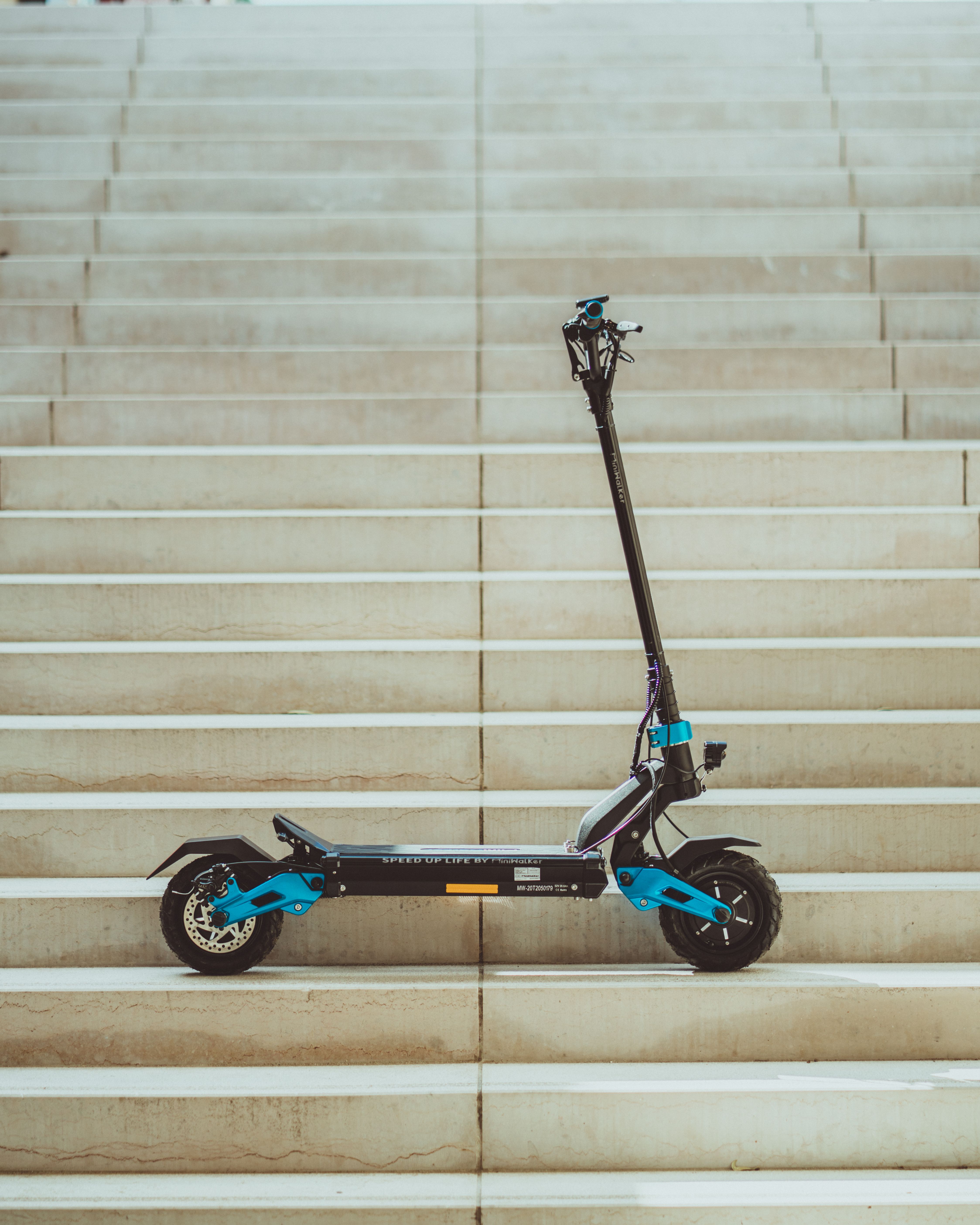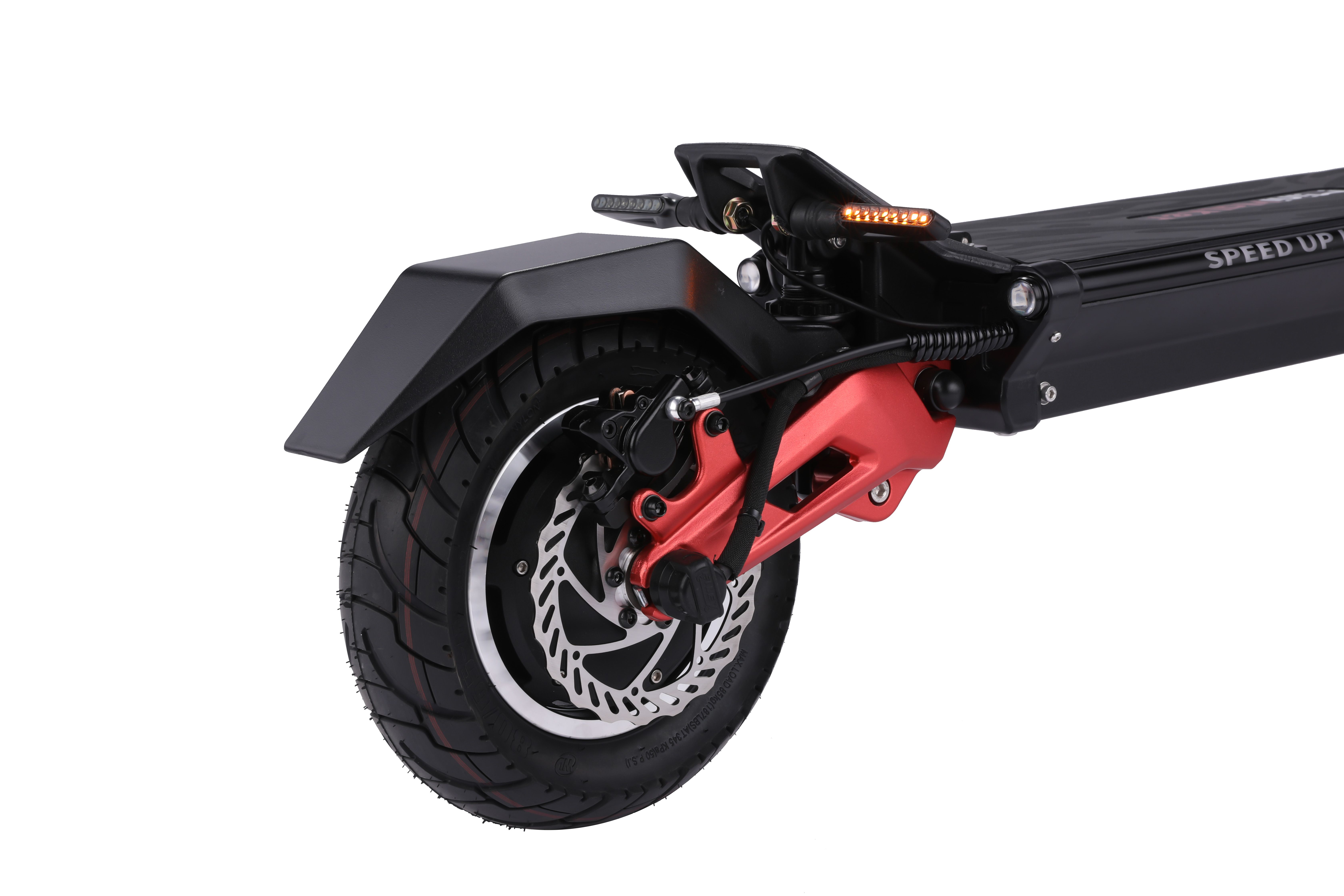Torque Comparison of Different Electric Scooters: Brushless Scooter Motor The Fastest?
Last updated on: 7/21/2023

Electric scooters have surged in popularity, becoming a preferred transportation option for urban commuters and environmentally-conscious individuals. The performance of these sleek vehicles hinges on a crucial factor: torque.
Torque, the twisting force generated by the motor, directly affects acceleration, climbing ability, and overall scooter performance.
In this article, we explore the significance of torque in electric scooters, with a specific focus on brushless scooter motors, and compare the torque outputs of various electric scooter models. Join us as we delve into the world of electric scooter torque and its impact on ride quality.
Understanding Torque in Electric Scooters
Torque, in the context of electric motors, refers to the twisting force that enables rotational motion. It is of paramount importance in electric scooters as it directly affects the scooter's ability to accelerate swiftly and climb steep hills with ease.
Torque plays a crucial role in an electric scooter's overall performance. It determines how quickly the scooter can reach its top speed, conquer inclines effortlessly, and handle various riding conditions smoothly.
Factors influencing torque output in electric scooters include:
- Electric Scooter Motor type (e.g., brushed or brushless)
- Motor design (e.g., stator and rotor configuration)
- Gear ratio
- Weight
- Tire traction
What is a Brushless Scooter Motor?

Brushless scooter motors, a cutting-edge technology, are revolutionizing the electric scooter industry. These motors employ advanced engineering to enhance torque production and improve overall performance.
Benefits of Brushless Motors in terms of Torque Production:
Higher Peak Power: Brushless motors deliver higher peak power compared to their brushed counterparts. This translates to increased torque, enabling quicker acceleration and improved hill-climbing capabilities.
Efficient Mounting Bracket: Brushless motors are typically equipped with a mounting bracket that enhances stability and minimizes vibration. This ensures optimal torque transfer from the motor to the scooter, resulting in smoother performance.
Advanced Design Features: Brushless motors often incorporate features like dual D-bore, phase wires, and opposing connectors. These design elements maximize torque output, reduce energy losses, and promote high-speed operation, enhancing the overall power and efficiency of the scooter.
Torque Comparison of Electric Scooters
Methodology for Measuring and Comparing Torque Output
To ensure a reliable and accurate comparison of torque output among different electric scooters, a rigorous methodology is crucial. In this study, we will employ a specialized dynamometer designed specifically for electric scooter testing.
The dynamometer allows us to apply controlled resistance to each scooter's motor, simulating real-world riding conditions. By measuring the torque produced at various speed levels, we can obtain precise data on each scooter's torque output.
Multiple tests will be conducted to account for any variations and ensure the accuracy of the results. This methodology guarantees a standardized approach to measure and compare the torque output of the electric scooters, providing valuable insights into their performance capabilities.
Presentation of the Torque Data
In the section titled "Presentation of the torque data," we will present the torque measurements obtained from our tests for each electric scooter under comparison. The torque data will be presented in a visually appealing manner, utilizing graphs to showcase the torque values at different speed intervals.
Additionally, a comprehensive table summarizing the torque outputs for each scooter will be provided. This presentation format will enable readers to easily grasp and compare the torque performance of the different electric scooters, facilitating their understanding of the variations in torque output across the models.
How to Compare the Torque of Different Electric Scooters?
Comparing the torque output of different electric scooters can be a valuable exercise when making a purchasing decision. To conduct a torque comparison effectively, it is essential to consider factors such as motor type (brushed, brushless, or hybrid), motor design, gear ratio, and weight.
Begin by gathering torque data for each scooter through reliable testing methods, such as using a dynamometer. Analyze the torque values at various speed levels to understand each scooter's performance during acceleration and hill climbing.
Additionally, take into account the impact of torque on battery life and overall power efficiency. By systematically comparing these factors, potential buyers can make informed decisions and select the electric scooter that best suits their needs and preferences.
Factors Affecting Torque in Electric Scooters

Here are the factors that affect the torque:
1. Motor Power and Voltage on Torque
The motor power and voltage of an electric scooter have a direct impact on the torque it can generate. Higher motor power results in increased torque output, allowing for better acceleration and improved performance in demanding situations like climbing hills.
Similarly, higher voltage supplied to the motor leads to higher torque production. This is because increased voltage enables the motor to draw more current, thereby generating more torque.
2. Motor Design, including Stator and Rotor Configuration
The design of the motor, particularly the stator and rotor configuration, significantly influences torque production in electric scooters. The stator consists of a stationary set of coils, while the rotor consists of a rotating component with magnets.
The number and arrangement of these components affect the magnetic field and, subsequently, the torque generated. Motors with optimized stator and rotor designs, such as those with more coils or unique magnet arrangements, can enhance torque output.
3. Gear Ratio and its Relation to Torque Output
The gear ratio plays a vital role in determining the torque output of an electric scooter. The gear ratio refers to the ratio of the number of teeth on the driving gear (connected to the motor) to the driven gear (connected to the wheels).
A higher gear ratio allows for greater torque multiplication, enabling the scooter to generate more twisting force. This is particularly advantageous during initial acceleration and when climbing steep inclines.
Other factors that may affect torque in electric scooters
Weight - The weight of the scooter, including the rider and any additional load, can affect torque performance. Heavier scooters require more torque to achieve the same level of acceleration and hill-climbing ability as lighter scooters.
Tire Traction - The traction between the scooter's tires and the road surface influences torque transfer. Adequate tire grip allows for better utilization of torque, enabling efficient power delivery to the wheels.
Conclusion
Torque is a crucial factor in electric scooters, affecting their acceleration, hill-climbing ability, and overall performance. Factors such as motor power, voltage, design, gear ratio, weight, and tire traction influence torque output.
By considering these factors and comparing torque outputs, riders can make informed decisions when selecting an electric scooter that meets their needs. Understanding torque's significance empowers riders to choose a scooter that delivers optimal performance and enhances their riding experience.
Join the Newsletter
Wanna hear new articles, flash sales and events delivered to your inbox? Join the Miniwalker newsletter now!